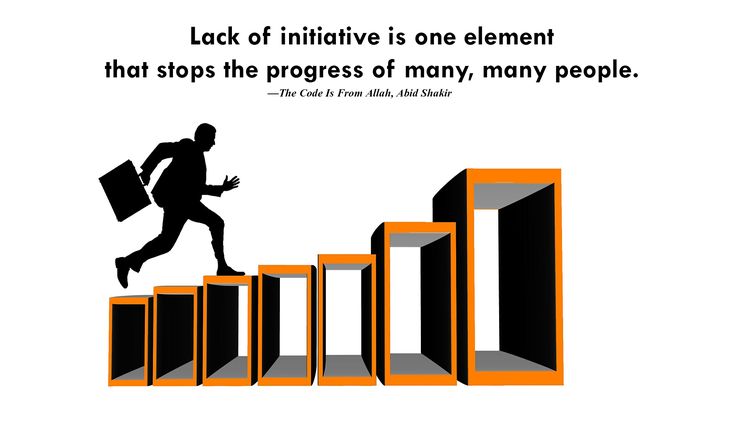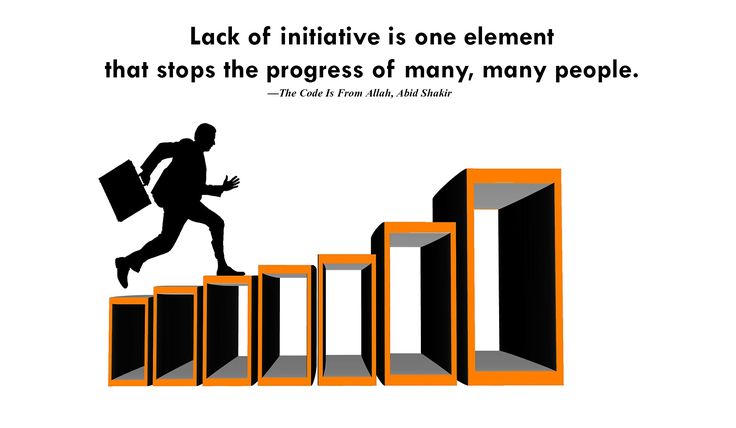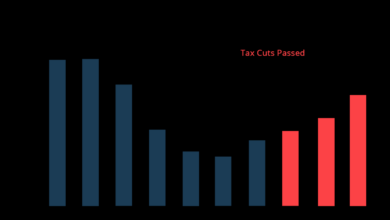
All Is Laissez Faire A Deep Dive
All is laissez faire – a bold statement, isn’t it? This exploration delves into the implications of a society operating entirely under laissez-faire principles. We’ll examine the core tenets of this economic and governance philosophy, considering its potential benefits and drawbacks in a modern context. The discussion will touch upon various aspects of daily life, from personal relationships to global industries.
This in-depth look will examine the concept of laissez-faire from multiple angles, including its historical context, potential applications, inherent conflicts, and alternative perspectives. Expect a comprehensive overview, complete with illustrative scenarios and a visual representation of the complexities involved.
Defining Laissez-Faire
Laissez-faire, a French term meaning “let it be,” embodies a philosophy of minimal government intervention in the economy. This approach, deeply rooted in Enlightenment ideals, suggests that individuals and markets, left to their own devices, can achieve optimal outcomes. Its historical significance lies in its contrast with mercantilist policies prevalent in previous eras. The concept continues to be debated and applied in various economic and political contexts today.Laissez-faire economics advocates for limited government regulation in areas such as production, pricing, and trade.
It presumes that free markets, driven by individual self-interest, will naturally allocate resources efficiently. This approach often emphasizes the role of competition and supply and demand in shaping economic activity. Proponents of laissez-faire believe that government interference often distorts these natural forces, hindering economic growth and prosperity.
Core Principles of Laissez-Faire Governance
The core principles of laissez-faire governance revolve around minimizing government intervention in the economy. This encompasses allowing individuals to pursue their own economic interests without excessive restrictions. A crucial aspect is the protection of private property rights, enabling individuals to own and control their assets freely. Furthermore, laissez-faire advocates for a limited role for the state, focusing primarily on maintaining law and order and enforcing contracts.
Philosophical Underpinnings of Laissez-Faire Thought
Laissez-faire thought is deeply connected to Enlightenment philosophy, particularly the emphasis on individual liberty and natural rights. Thinkers like Adam Smith, with his concept of the “invisible hand,” laid the groundwork for laissez-faire economics. Smith argued that self-interest, channeled through free markets, could lead to societal benefit. Furthermore, a belief in individual rationality and the ability of markets to self-correct underpinned the laissez-faire approach.
Historical Context of Laissez-Faire Approaches
Understanding laissez-faire requires considering its evolution across different historical periods. The following table Artikels key features and variations in laissez-faire approaches over time.
| Historical Period | Key Features | Variations |
|---|---|---|
| 18th Century (Early Laissez-Faire) | Emergence of the concept, emphasis on minimal government intervention. | Limited government regulation, focus on natural rights. |
| Late 19th Century (Classical Laissez-Faire) | Increased industrialization, emphasis on free trade and competition. | Growth of monopolies and trusts, calls for regulation. |
| 20th Century (Modern Variations) | Government intervention in the economy becomes more prominent, especially during economic crises. | Mixed economies with government regulation alongside free markets. |
| 21st Century (Contemporary Laissez-Faire) | Ongoing debate about the optimal balance between government intervention and free markets. | Emphasis on deregulation in some sectors, continued support for limited government intervention. |
Implications of “All Is Laissez-Faire”
The concept of “all is laissez-faire” presents a stark contrast to the complex realities of modern governance and societal interaction. It suggests a complete absence of government intervention in all spheres of life, from the economy to personal relationships. This extreme approach, while theoretically appealing in some contexts, raises significant questions about the potential benefits and drawbacks in a multifaceted world.
Examining its implications reveals both enticing possibilities and potential pitfalls.A society operating under a strictly laissez-faire principle would likely see a wide range of outcomes, some positive and some negative. The free market, unfettered by regulations, could foster innovation and economic growth, leading to increased competition and potentially lower prices. However, this unbridled freedom could also lead to significant inequality and exploitation, as the strongest entities could potentially dominate the market, leading to a concentration of wealth and power.
Understanding these competing forces is crucial to assessing the true impact of such a system.
Economic Implications
The unfettered market, central to a laissez-faire system, could lead to significant economic volatility. The absence of government regulation might encourage reckless speculation and unsustainable practices, potentially resulting in financial crises. History provides numerous examples of unregulated markets leading to boom-and-bust cycles, with devastating consequences for individuals and communities. Conversely, it could promote entrepreneurship and innovation, leading to rapid advancements in technology and productivity.
While the saying “all is laissez faire” might sound appealing in theory, sometimes it’s just not enough. Take the recent Air Jamaica CEO resignation, prompting protests, as a case study. This shows how even in a supposedly free-market system, like the one Air Jamaica operates in, things aren’t always so smooth. air jamaica ceo resignation prompts protest highlights the need for more intervention and accountability, though, ironically, a complete laissez faire approach would likely leave the company in a freefall.
Ultimately, a balance is key, isn’t it?
Social Implications
A laissez-faire approach to social interactions raises profound questions about individual rights and responsibilities. Without social safety nets or government intervention, the vulnerable and marginalized could be left without support. This could lead to a widening gap between the wealthy and the poor, impacting social cohesion and potentially creating a climate of instability. However, it could also encourage personal responsibility and self-reliance, fostering a more independent and resilient society.
Governance Implications
The concept of “all is laissez-faire” would fundamentally alter the role of government. A complete withdrawal from regulation would lead to a decline in public services, potentially compromising the safety and well-being of citizens. This could impact public health, infrastructure, and the provision of essential services like education and sanitation. Alternatively, it might lead to a more responsive and agile government, focusing on core functions and allowing the market to handle other issues.
Personal Relationships Implications
Applying the laissez-faire principle to personal relationships could have significant consequences. The absence of external constraints or expectations could lead to an emphasis on individual autonomy, potentially fostering more open and honest communication. However, it might also lead to a breakdown in social norms and a lack of shared values, making it challenging to navigate complex interpersonal dynamics. The absence of intervention could potentially create a more individualistic society, where personal responsibility and self-determination are paramount.
Applications and Examples
The concept of “all is laissez-faire” presents a fascinating, albeit often unrealistic, lens through which to view various societal and economic systems. While a completely hands-off approach is rarely, if ever, fully realized, understanding the potential benefits and drawbacks of such a philosophy is crucial for evaluating the efficacy of different intervention strategies. This section will delve into specific examples, highlighting instances where a laissez-faire approach is advantageous, those where it’s detrimental, and how this philosophy manifests (or doesn’t) in real-world scenarios.Applying a laissez-faire approach, in its purest form, entails minimal government intervention in economic and social spheres.
This can manifest in various ways, from allowing free markets to regulate themselves to minimal social safety nets. It’s crucial to recognize that the effectiveness of this approach hinges significantly on the specific context and the nature of the issues at hand.
While “all is laissez faire” might sound idyllic, the reality is often more nuanced. Even in the seemingly carefree world of all-inclusive vacations, things are changing. Smaller, boutique all-inclusive resorts are popping up, offering more personalized experiences and a touch of local flavor, showing that the all-inclusive model is evolving, not just relaxing into a “all is laissez faire” attitude.
This shift highlights that even in the most relaxed settings, some choices are still being made, reflecting the ever-changing nature of travel. It’s a fascinating evolution in the travel industry, and I’m keen to see where it leads. Check out how all inclusive resorts go small to learn more. Ultimately, “all is laissez faire” is still a hopeful aspiration, even if the details of its realization are continuously adjusted.
Beneficial Applications of Laissez-Faire
Laissez-faire principles can foster innovation and efficiency in certain circumstances. Unfettered competition, for instance, can spur the development of new products and services, ultimately benefiting consumers with lower prices and a wider array of choices. In the early stages of technological advancements, this can be particularly important. The emergence of the internet, driven by a relatively unregulated environment, is a prime example.
Early internet startups flourished without extensive government oversight, leading to rapid innovation and the creation of revolutionary technologies.
Detrimental Applications of Laissez-Faire
However, a completely unregulated environment can also lead to significant downsides. The absence of social safety nets can exacerbate inequalities, potentially leading to a widening gap between the rich and poor. Furthermore, without adequate environmental regulations, industries may prioritize short-term profits over long-term sustainability, resulting in environmental damage.
Laissez-Faire in the Technology Industry
The technology industry offers a compelling example of how “all is laissez-faire” might play out in a specific sector. While not entirely laissez-faire, the early days of the internet, characterized by a relatively hands-off approach from governments, fostered rapid innovation. However, as the industry matured, concerns about data privacy, monopolies, and ethical implications of AI became prominent. This suggests that while a degree of laissez-faire can be beneficial for initial growth, it’s essential to establish appropriate regulatory frameworks as the sector evolves.
The rapid advancement of AI, for instance, requires careful consideration of its potential societal impact and necessitates a nuanced approach to regulation.
Societal Structures with Laissez-Faire Principles
Some societies, while not fully embracing laissez-faire, incorporate elements of it in their governance structures. Examples include countries with robust free market systems, where private enterprise plays a significant role in the economy. Hong Kong, for instance, is often cited as a model of limited government intervention in the economy. However, even in these examples, laissez-faire principles are typically combined with specific regulations and safeguards to prevent detrimental consequences.
While the concept of “all is laissez faire” might sound appealing in theory, the reality is often more complex. It’s easy to imagine a world where minimal government intervention leads to innovative solutions, but the sheer scale of projects like those handled by the largest architectural firms 2, largest architectural firms 2 , demonstrates the intricate need for regulation and oversight.
Ultimately, a healthy balance between free market principles and societal needs is key to a truly successful outcome, reinforcing the idea that “all is laissez faire” is a rather simplistic view.
The extent to which these principles are applied varies considerably, depending on the specific context and the needs of the society. There is no one-size-fits-all solution.
Potential Conflicts and Contradictions
The seemingly appealing simplicity of a laissez-faire approach, where minimal government intervention governs all aspects of society, often hides a complex web of potential conflicts and contradictions. While proponents argue for freedom and efficiency, a complete absence of regulation can lead to unforeseen consequences and inequalities. Understanding these potential pitfalls is crucial for evaluating the viability and desirability of such a system.The inherent tension between individual liberty and societal well-being is a primary concern.
A pure laissez-faire system, by design, prioritizes individual freedom of action, potentially neglecting the needs of vulnerable populations and the common good. This can manifest in various ways, from the exploitation of workers to the degradation of the environment. It’s a delicate balance between allowing individuals to pursue their own interests and ensuring a functional and equitable society.
Potential Limitations of a Complete Laissez-Faire Approach
A complete laissez-faire system, while theoretically promoting efficiency and innovation, often faces significant practical limitations. Markets, left entirely to their own devices, can exhibit instability and unpredictability, leading to boom-and-bust cycles. The absence of regulations can also result in the creation of monopolies or oligopolies, potentially stifling competition and innovation. Furthermore, the lack of oversight can result in the production and consumption of harmful goods and services, negatively impacting both individual health and public safety.
Conflicts with Societal Values and Goals
A strict laissez-faire approach may clash with fundamental societal values and goals. For instance, many societies prioritize fairness and equity. A market operating purely under laissez-faire principles could exacerbate existing inequalities, potentially creating a system where the wealthy accumulate more wealth at the expense of the poor. Furthermore, environmental protection often requires government intervention to limit pollution and resource depletion.
A laissez-faire system, by prioritizing individual economic interests, could lead to environmental degradation.
Consequences of Ignoring Needs in a Laissez-Faire System
Ignoring the needs of vulnerable populations in a laissez-faire system can lead to significant social and economic problems. The absence of safety nets and social programs could leave the impoverished and disadvantaged without adequate healthcare, education, or housing. This can perpetuate cycles of poverty and inequality, hindering overall societal progress. Moreover, the lack of regulation can lead to the exploitation of workers, including issues like unsafe working conditions and inadequate wages.
Ultimately, this can create a system where the needs of a minority of individuals dominate the overall welfare of the population.
Examples of Market Failures in Laissez-Faire Systems
Historical examples illustrate the potential pitfalls of unfettered markets. The Great Depression, for instance, was partly attributed to the unregulated financial markets of the time. The absence of appropriate regulations allowed for excessive speculation and risk-taking, leading to a catastrophic collapse. Similarly, the 2008 financial crisis highlights the potential for market instability and the importance of government oversight.
Alternative Perspectives
The concept of “all is laissez-faire” presents a stark and potentially problematic vision of societal governance. While proponents argue for the inherent efficiency and freedom of such a system, critics point to significant flaws and potential for widespread harm. This section explores alternative viewpoints and models that offer different solutions to address the issues raised by a purely laissez-faire approach.
Critique of Complete Laissez-Faire
A complete laissez-faire approach, while emphasizing individual liberty, often overlooks the crucial role of societal structures and regulations. Critics argue that the absence of any government intervention can lead to market failures, exploitation, and an uneven distribution of resources. Unfettered markets can generate significant inequalities, potentially creating a society where the well-being of many is sacrificed for the benefit of a few.
Alternative Governance Models, All is laissez faire
Various governance models exist that offer alternatives to the pure laissez-faire approach. These models recognize the need for a balance between individual freedom and societal well-being. A few prominent examples include:
- Social Democracy: This model prioritizes social welfare alongside economic freedom. It involves a degree of government intervention to regulate markets, provide social safety nets (like unemployment benefits and healthcare), and redistribute wealth. Examples of social democratic countries include Scandinavian nations, demonstrating that a strong social safety net and robust social programs can coexist with a thriving private sector.
- Keynesian Economics: This approach advocates for active government intervention in the economy to manage demand and stabilize markets. It emphasizes government spending and taxation policies to address economic downturns and stimulate growth. Keynesian policies were employed in the aftermath of the Great Depression and have been used to combat recessions in various countries since then. The goal is to maintain economic stability and prevent widespread suffering.
- Mixed Economies: These economies combine elements of both free markets and government intervention. They often include government regulation of industries to protect consumers, environmental safeguards, and social programs. Many developed countries operate under mixed economies, finding a balance between private sector dynamism and public good provision. This blend allows for the strengths of both systems to coexist.
Addressing Laissez-Faire’s Potential Issues
Different governance models address the potential issues inherent in a pure laissez-faire approach in various ways. For example, social democratic countries often implement strong labor protections, environmental regulations, and universal healthcare systems. These measures mitigate the potential for exploitation and ensure a more equitable distribution of resources.
While the concept of “all is laissez faire” might sound appealing, sometimes the reality is a little less free-flowing. Take, for example, the recent news about Aker Yards name goes away; aker yards name goes away. This change, seemingly a small thing, highlights how even seemingly insignificant things can disrupt the expected flow. Ultimately, though, the larger picture of “all is laissez faire” still holds true in the face of such shifts, as adaptation and change are just part of the natural order.
Examples of Alternative Approaches
Consider the contrasting approaches to environmental protection. A purely laissez-faire system might result in significant pollution, while countries with stronger environmental regulations prioritize the health of their ecosystems. For instance, countries with comprehensive environmental regulations often see fewer instances of widespread pollution compared to those with weaker regulations. This difference underscores the importance of governmental intervention in addressing societal issues.
Another example is the regulation of monopolies, which can lead to more equitable competition and better pricing for consumers. In contrast, a purely laissez-faire approach might result in monopolies exploiting consumers through higher prices and restricted choices.
Illustrative Scenarios
The concept of “all is laissez-faire” presents a fascinating, yet often problematic, lens through which to view societal structures and challenges. While proponents argue for its potential to foster innovation and efficiency, critics highlight the potential for unintended consequences and widening inequalities. This section delves into specific scenarios to illustrate the multifaceted implications of such a philosophy.
A Fictional Laissez-Faire Society: The “Freehaven” Experiment
The utopian society of Freehaven, established on a remote island, embraced a radical laissez-faire approach. All regulations, from environmental protection to labor standards, were abolished. Initial results were surprising. Innovation flourished as entrepreneurs developed novel technologies and products. However, the absence of safety nets led to significant disparities in wealth.
A small elite controlled the majority of resources, while the majority struggled with inadequate access to basic necessities. The environment suffered severe degradation due to unchecked industrialization. Eventually, social unrest erupted, leading to a re-evaluation of the laissez-faire model.
Unintended Consequences of Total Laissez-Faire
The “All Is Laissez-Faire” policy in the fictional nation of Atheria resulted in unforeseen challenges. The government, believing in minimal intervention, allowed unregulated financial markets to flourish. Speculative bubbles emerged, leading to a rapid increase and subsequent collapse of asset prices. Millions lost their savings, and the economy spiraled into a deep recession. This stark example demonstrates that a complete absence of government intervention can create significant economic instability.
The resulting societal damage underscored the importance of balancing freedom with necessary regulations.
Laissez-Faire and Poverty: The Case of “New Genesis”
In the fictional nation of New Genesis, the government adopted a strict laissez-faire approach to poverty. The belief was that the free market, without government interference, would naturally alleviate poverty. However, the absence of social safety nets and welfare programs meant that the poorest citizens were left vulnerable. Child labor increased as families struggled to make ends meet.
While “all is laissez faire” might seem like a simplistic view, it’s interesting to consider how it plays out in the real world. Witnessing dozens of graduates honored at a transformational leadership ceremony, like this one , highlights the potential for individual initiative and the development of leadership skills. Perhaps, in a way, this validates the belief that, ultimately, the choices and actions of individuals shape their own destinies and success, and therefore, all is laissez faire.
The lack of access to education and healthcare further entrenched the cycle of poverty. The situation worsened over time, highlighting the critical role of government intervention in addressing social problems.
Benefits of Laissez-Faire in Specific Contexts: The “Innovation Valley”
Innovation Valley, a region within a larger nation, experienced significant economic growth through a carefully targeted laissez-faire approach. The government reduced bureaucratic hurdles and streamlined regulations for start-ups and entrepreneurs. Tax incentives were offered to attract foreign investment and stimulate technological advancements. This fostered a culture of innovation and entrepreneurship, leading to the development of groundbreaking technologies.
The region saw significant job creation and a marked improvement in living standards. However, this model depended heavily on pre-existing infrastructure and a well-educated workforce, indicating the importance of context in applying laissez-faire principles.
Visual Representation

Exploring the multifaceted concept of “all is laissez-faire” requires a visual approach to grasp its various facets. A clear representation helps understand the advantages, disadvantages, and potential conflicts inherent in a completely hands-off economic system. Visual tools such as tables, infographics, and mind maps can provide a holistic perspective on the implications of such a philosophy.
Laissez-Faire System Advantages and Disadvantages
Understanding the implications of a laissez-faire system necessitates a clear breakdown of its potential benefits and drawbacks. This table summarizes the key advantages and disadvantages of a completely unregulated economic model.
| Aspect | Advantages | Disadvantages |
|---|---|---|
| Economic Efficiency | Potentially increased efficiency due to competition and innovation, driving prices down and increasing choice. | Potential for market failures like monopolies or externalities (pollution) due to lack of regulation. |
| Individual Freedom | Enhanced individual freedom in economic choices, fostering entrepreneurship and innovation. | Potential for exploitation of workers or consumers in the absence of safety nets or labor protections. |
| Resource Allocation | Resources allocated based on market demand, theoretically leading to optimal resource use. | Inequality and poverty can emerge if the market fails to provide for everyone’s basic needs. |
| Innovation | Incentivizes innovation due to the pursuit of profit in a competitive environment. | Potential for unsustainable practices or exploitation of natural resources in the absence of environmental regulations. |
| Government Minimalism | Reduced government intervention, leading to potential savings in administrative costs. | Limited social safety nets and public goods like infrastructure, potentially hindering overall societal well-being. |
Infographic: Comparing Laissez-Faire to Other Systems
An infographic comparing laissez-faire principles to other economic systems, such as socialism or capitalism, can illustrate the fundamental differences in their approach to resource allocation, economic regulation, and individual freedom. Such a visual representation can help viewers easily grasp the key distinctions between these approaches. The infographic would include a visual representation of each system, highlighting key characteristics.
Mind Map: Interconnections of “All Is Laissez-Faire”
A mind map, visually illustrating the interconnections between various aspects of “all is laissez-faire,” can provide a broader understanding of the concept. This visual tool shows how individual freedom, resource allocation, economic efficiency, and government involvement intertwine in this particular economic philosophy. Nodes representing these concepts would be linked to demonstrate the relationships between them, using arrows to show the causal or consequential links.
Conclusive Thoughts

Ultimately, the idea of “all is laissez faire” presents a complex and multifaceted challenge. While it promises freedom and efficiency in certain areas, it also raises serious concerns about potential inequalities and unintended consequences. The exploration of this concept necessitates a balanced perspective, considering the potential advantages and disadvantages before drawing any conclusions. This essay aims to provide a framework for further critical thinking on this intriguing notion.
Q&A: All Is Laissez Faire
What are some examples of situations where a laissez-faire approach might be detrimental?
While laissez-faire can foster innovation and competition, it can also lead to exploitation of workers, environmental damage, and the widening of wealth gaps. Unregulated markets can sometimes fail to address crucial societal needs like healthcare or education.
How might the statement “all is laissez-faire” conflict with other societal values?
A purely laissez-faire approach might clash with values like social justice, equality, and environmental protection. The pursuit of individual gain could potentially undermine collective well-being and common goals.
What are some alternative viewpoints on a complete laissez-faire approach?
Many argue that a mixed economy, incorporating elements of both free markets and government regulation, is often a more effective approach to addressing the diverse needs of society. Strong social safety nets and regulatory oversight can help mitigate the negative consequences of unchecked capitalism.
What are some potential conflicts or contradictions inherent in the concept of “all is laissez-faire”?
The inherent tension between individual freedom and collective responsibility is a core contradiction. A completely laissez-faire system might prioritize individual gain over social well-being, potentially creating a divide between the haves and have-nots.






